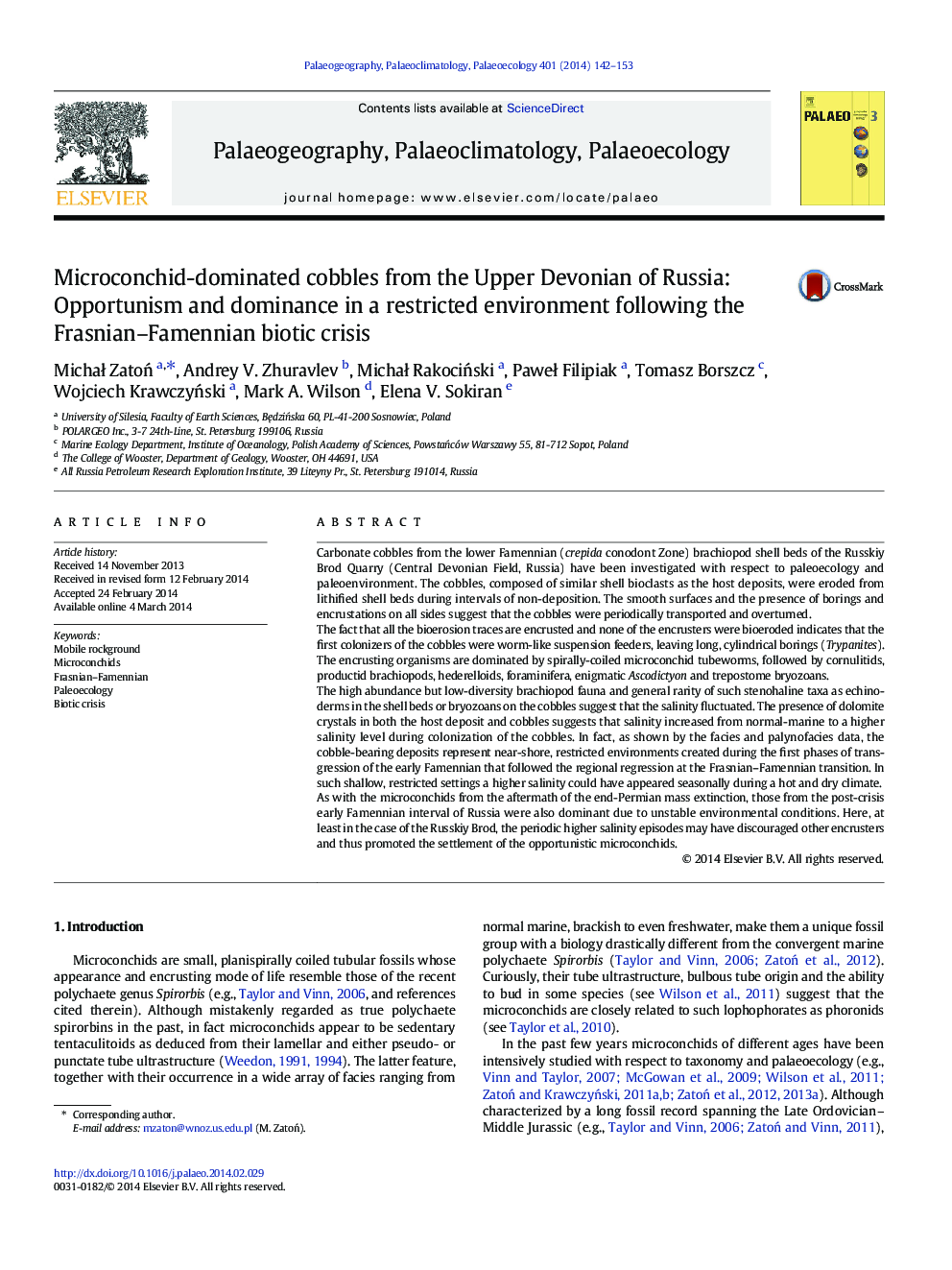| کد مقاله | کد نشریه | سال انتشار | مقاله انگلیسی | نسخه تمام متن |
|---|---|---|---|---|
| 4466280 | 1622189 | 2014 | 12 صفحه PDF | دانلود رایگان |

• Lower Famennian encrusted and bored carbonate clasts were investigated.
• All clasts are dominated by microconchid tubeworms.
• Near-shore, restricted environment with fluctuating salinity in a hot, dry climate.
• Probably salinity fluctuations promoted microconchid abundance.
Carbonate cobbles from the lower Famennian (crepida conodont Zone) brachiopod shell beds of the Russkiy Brod Quarry (Central Devonian Field, Russia) have been investigated with respect to paleoecology and paleoenvironment. The cobbles, composed of similar shell bioclasts as the host deposits, were eroded from lithified shell beds during intervals of non-deposition. The smooth surfaces and the presence of borings and encrustations on all sides suggest that the cobbles were periodically transported and overturned.The fact that all the bioerosion traces are encrusted and none of the encrusters were bioeroded indicates that the first colonizers of the cobbles were worm-like suspension feeders, leaving long, cylindrical borings (Trypanites). The encrusting organisms are dominated by spirally-coiled microconchid tubeworms, followed by cornulitids, productid brachiopods, hederelloids, foraminifera, enigmatic Ascodictyon and trepostome bryozoans.The high abundance but low-diversity brachiopod fauna and general rarity of such stenohaline taxa as echinoderms in the shell beds or bryozoans on the cobbles suggest that the salinity fluctuated. The presence of dolomite crystals in both the host deposit and cobbles suggests that salinity increased from normal-marine to a higher salinity level during colonization of the cobbles. In fact, as shown by the facies and palynofacies data, the cobble-bearing deposits represent near-shore, restricted environments created during the first phases of transgression of the early Famennian that followed the regional regression at the Frasnian–Famennian transition. In such shallow, restricted settings a higher salinity could have appeared seasonally during a hot and dry climate.As with the microconchids from the aftermath of the end-Permian mass extinction, those from the post-crisis early Famennian interval of Russia were also dominant due to unstable environmental conditions. Here, at least in the case of the Russkiy Brod, the periodic higher salinity episodes may have discouraged other encrusters and thus promoted the settlement of the opportunistic microconchids.
Journal: Palaeogeography, Palaeoclimatology, Palaeoecology - Volume 401, 1 May 2014, Pages 142–153